-
 Bitcoin
Bitcoin $83,733.4061
-1.29% -
 Ethereum
Ethereum $1,594.3479
-1.74% -
 Tether USDt
Tether USDt $1.0000
0.01% -
 XRP
XRP $2.0826
-1.94% -
 BNB
BNB $581.9915
-0.41% -
 Solana
Solana $126.1154
-2.12% -
 USDC
USDC $0.9999
-0.01% -
 TRON
TRON $0.2513
0.07% -
 Dogecoin
Dogecoin $0.1553
-2.14% -
 Cardano
Cardano $0.6128
-3.26% -
 UNUS SED LEO
UNUS SED LEO $9.3174
-1.22% -
 Chainlink
Chainlink $12.3521
-1.81% -
 Avalanche
Avalanche $18.8671
-5.22% -
 Stellar
Stellar $0.2363
-1.27% -
 Toncoin
Toncoin $2.9018
0.31% -
 Shiba Inu
Shiba Inu $0.0...01172
-0.86% -
 Sui
Sui $2.0951
-3.63% -
 Hedera
Hedera $0.1580
-4.98% -
 Bitcoin Cash
Bitcoin Cash $319.4231
-0.81% -
 Litecoin
Litecoin $76.0657
-1.99% -
 Polkadot
Polkadot $3.5459
-2.73% -
 Dai
Dai $1.0000
0.01% -
 Bitget Token
Bitget Token $4.2560
-1.12% -
 Hyperliquid
Hyperliquid $15.2255
-5.33% -
 Ethena USDe
Ethena USDe $0.9992
0.01% -
 Pi
Pi $0.6236
-15.50% -
 Monero
Monero $216.8844
2.23% -
 Uniswap
Uniswap $5.2307
-1.66% -
 OKB
OKB $52.1135
1.06% -
 Pepe
Pepe $0.0...07120
-2.00%
What are the risks of overclocking a mining machine?
Overclocking a mining machine can boost performance but risks hardware damage, stability issues, voided warranties, increased energy costs, reduced efficiency, and security vulnerabilities.
Apr 09, 2025 at 04:01 pm
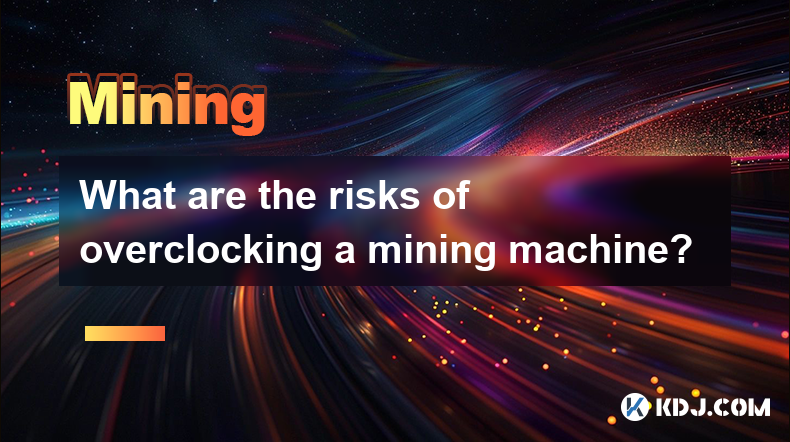
Overclocking a mining machine can be an enticing way to boost performance and increase cryptocurrency mining profits. However, it comes with several risks that miners should be aware of. This article will delve into the various risks associated with overclocking a mining machine, providing a comprehensive understanding of the potential downsides.
Hardware Damage
One of the most significant risks of overclocking a mining machine is the potential for hardware damage. When you overclock, you push the hardware beyond its designed limits, which can lead to increased heat generation and stress on the components.
- Increased Heat: Overclocking causes the GPU or ASIC to run at higher frequencies, which generates more heat. If the cooling system cannot handle this increased heat, it can lead to thermal throttling or, worse, permanent damage to the hardware.
- Component Wear: Continuous operation at higher speeds can accelerate the wear and tear on the components. This can shorten the lifespan of the mining machine, leading to more frequent replacements and higher maintenance costs.
- Power Supply Strain: Overclocking also increases the power draw, which can strain the power supply unit (PSU). If the PSU is not rated to handle the increased load, it may fail, causing a complete shutdown of the mining operation.
Stability Issues
Overclocking can also lead to stability issues in the mining machine. When components are pushed beyond their limits, they may not function as reliably as they should.
- System Crashes: Overclocked systems are more prone to crashes and freezes. This can interrupt mining operations, leading to lost time and potential revenue.
- Data Corruption: In some cases, overclocking can cause data corruption, which can affect the integrity of the mining software and the blockchain data being processed.
- Inconsistent Performance: Even if the system does not crash, overclocking can lead to inconsistent performance. The machine may run at peak performance for a while but then slow down or become unstable, affecting overall mining efficiency.
Voided Warranties
Another important consideration is that overclocking can void the warranty on your mining hardware. Most manufacturers explicitly state that overclocking voids the warranty, leaving you without any recourse if the hardware fails.
- Manufacturer Policies: Check the warranty terms of your mining hardware. Many manufacturers will not cover any damage caused by overclocking, which means you will have to bear the full cost of repairs or replacements.
- Repair Costs: Without warranty coverage, the cost of repairing or replacing damaged components can be significant. This can offset any potential gains from increased mining performance.
- Resale Value: Overclocked hardware may also have a lower resale value, as potential buyers may be wary of purchasing used equipment that has been pushed beyond its limits.
Increased Energy Consumption
Overclocking a mining machine also leads to increased energy consumption. This can have both financial and environmental implications.
- Higher Electricity Bills: Running a mining machine at higher speeds consumes more electricity. This can significantly increase your operational costs, potentially negating any gains from increased mining performance.
- Environmental Impact: Increased energy consumption also means a larger carbon footprint. For miners concerned about the environmental impact of their operations, overclocking can exacerbate these concerns.
- Power Infrastructure: The increased power draw may also require upgrades to your power infrastructure, such as installing higher-capacity PSUs or improving cooling systems, which can add to the overall cost of mining.
Reduced Efficiency
While overclocking can increase the hash rate of a mining machine, it can also lead to reduced efficiency over time.
- Hash Rate vs. Efficiency: Initially, overclocking may boost the hash rate, but the increased power consumption can reduce the overall efficiency of the mining operation. This means you may not see a proportional increase in profits.
- Long-Term Performance: Over time, the increased stress on the hardware can lead to a decline in performance. The machine may not be able to sustain the overclocked speeds, leading to a drop in hash rate and efficiency.
- Optimization Challenges: Finding the right balance between overclocking and maintaining efficiency can be challenging. It requires constant monitoring and adjustments, which can be time-consuming and may not always yield the desired results.
Security Risks
Overclocking can also introduce security risks to your mining operation. When the system is unstable, it may be more vulnerable to attacks.
- Malware and Hacking: An unstable system is more susceptible to malware and hacking attempts. If the mining software crashes or becomes corrupted, it can open up vulnerabilities that malicious actors can exploit.
- Data Security: The integrity of the data being processed by the mining machine is crucial. Overclocking can increase the risk of data corruption, which can compromise the security of the blockchain and the transactions being processed.
- Network Vulnerabilities: If the mining machine is part of a larger network, overclocking can affect the stability of the entire network. This can create security risks for other connected devices and the overall mining operation.
Frequently Asked Questions
Q: Can overclocking a mining machine ever be beneficial?
A: While overclocking can increase the hash rate and potentially lead to higher mining rewards, the risks often outweigh the benefits. It is crucial to weigh the potential gains against the increased risk of hardware damage, stability issues, and higher operational costs.
Q: How can I monitor the performance of an overclocked mining machine?
A: To monitor the performance of an overclocked mining machine, you can use software tools like MSI Afterburner for GPUs or specific ASIC monitoring software. These tools can help you track temperatures, hash rates, and power consumption, allowing you to make adjustments as needed.
Q: Are there any safe ways to overclock a mining machine?
A: While no method of overclocking is completely safe, you can minimize risks by starting with small increments, closely monitoring temperatures and performance, and ensuring your cooling system is adequate. Always refer to the manufacturer's guidelines and be prepared to revert to default settings if issues arise.
Q: What should I do if my overclocked mining machine starts to show signs of instability?
A: If your overclocked mining machine shows signs of instability, such as frequent crashes or overheating, you should immediately revert to the default settings. Monitor the machine's performance to ensure stability returns, and consider consulting with other miners or technical experts for advice on safe overclocking practices.
Disclaimer:info@kdj.com
The information provided is not trading advice. kdj.com does not assume any responsibility for any investments made based on the information provided in this article. Cryptocurrencies are highly volatile and it is highly recommended that you invest with caution after thorough research!
If you believe that the content used on this website infringes your copyright, please contact us immediately (info@kdj.com) and we will delete it promptly.
- Synthetic Stablecoin Issuer Ethena Labs Shuts Down Operations in Germany
- 2025-04-16 10:15:20
- Make no mistake – Pulsz slots are top-notch
- 2025-04-16 10:15:20
- Pre-draft, Paige Bueckers Dazzled in a Brown Crystal-embellished Power Suit
- 2025-04-16 10:10:13
- As Q2 begins, crypto markets are showing signs of renewed optimism — and with it, fresh opportunities for strategic investment.
- 2025-04-16 10:10:13
- Top 3 Cryptocurrencies to Buy Right Now (April 15th)
- 2025-04-16 10:05:12
- Ethereum (ETH) Shows Early Signs of Recovery as Whales Accumulate
- 2025-04-16 10:05:12
Related knowledge
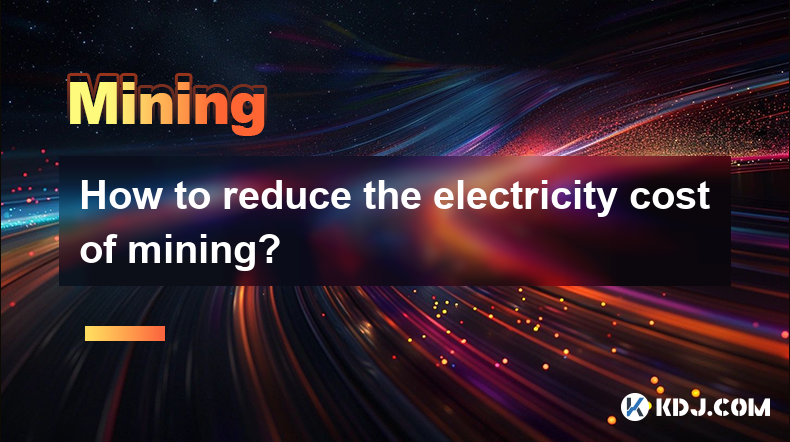
How to reduce the electricity cost of mining?
Apr 16,2025 at 08:42am
Mining cryptocurrencies, particularly Bitcoin, is an energy-intensive process that can lead to significant electricity costs. However, there are several strategies that miners can employ to reduce these expenses and make their operations more cost-effective. In this article, we will explore various methods to minimize the electricity cost of mining. Cho...
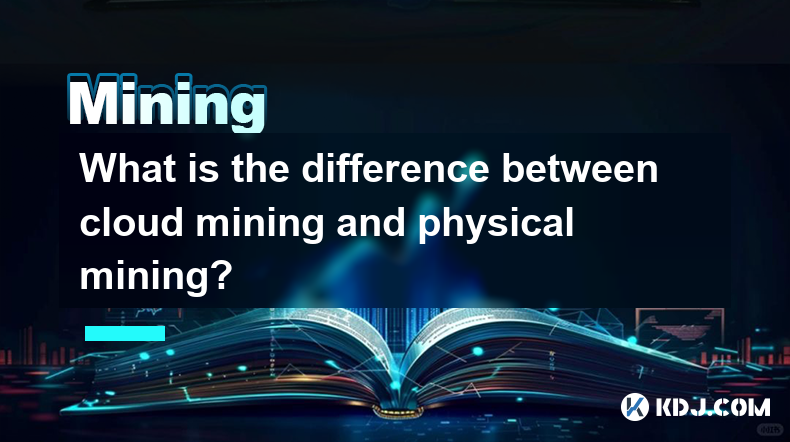
What is the difference between cloud mining and physical mining?
Apr 16,2025 at 01:49am
What is the difference between cloud mining and physical mining? In the world of cryptocurrencies, mining is the process by which new coins are generated and transactions are verified and added to the blockchain. There are two primary methods of mining: cloud mining and physical mining. Understanding the differences between these two approaches can help...
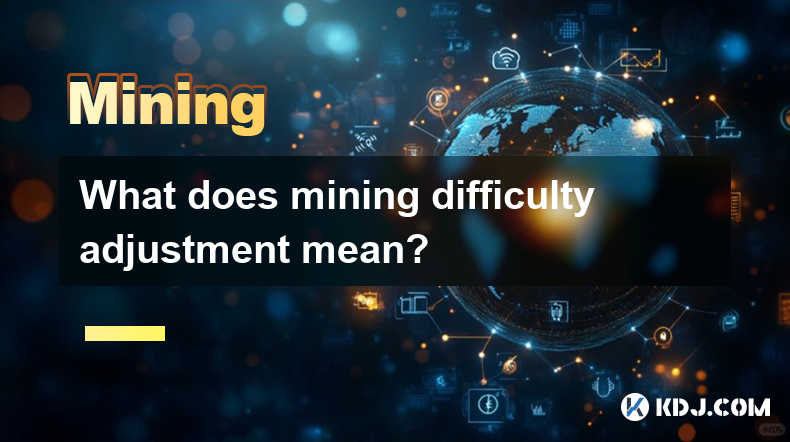
What does mining difficulty adjustment mean?
Apr 16,2025 at 12:42am
What does mining difficulty adjustment mean? Mining difficulty adjustment is a crucial mechanism in blockchain networks, particularly in Proof of Work (PoW) systems like Bitcoin. It ensures that the rate at which new blocks are added to the blockchain remains consistent, despite fluctuations in the total computational power (hash rate) of the network. T...

How to choose a suitable cryptocurrency for mining?
Apr 16,2025 at 10:15am
Choosing a suitable cryptocurrency for mining involves several considerations that can impact your profitability and efficiency. Mining cryptocurrencies can be a rewarding venture, but it requires careful planning and research. In this article, we will explore the key factors to consider when selecting a cryptocurrency for mining, ensuring you make an i...
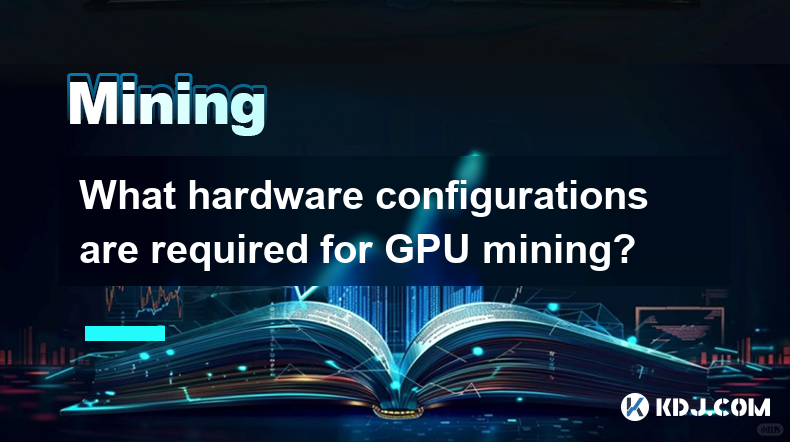
What hardware configurations are required for GPU mining?
Apr 16,2025 at 09:21am
GPU mining has become a popular method for cryptocurrency enthusiasts to mine various cryptocurrencies, such as Ethereum, Ravencoin, and others. To successfully engage in GPU mining, it is essential to understand the hardware configurations required to maximize efficiency and profitability. This article will delve into the specifics of what you need to ...
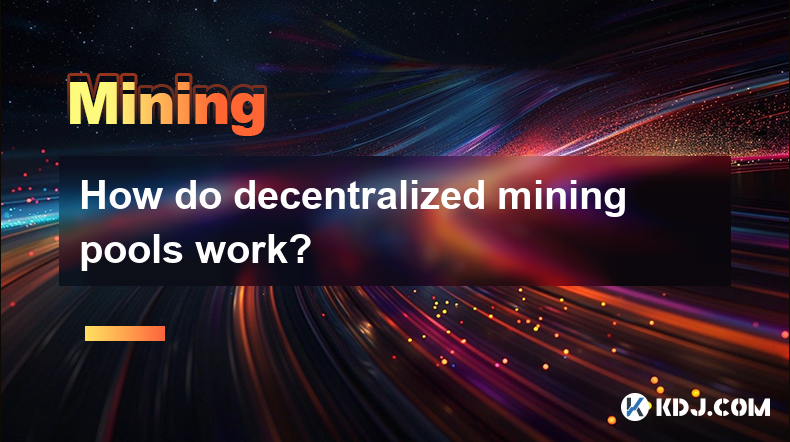
How do decentralized mining pools work?
Apr 16,2025 at 05:42am
Decentralized mining pools represent a significant evolution in the world of cryptocurrency mining, offering a more democratic and transparent approach compared to traditional centralized pools. In this article, we will explore the mechanics of decentralized mining pools, their benefits, and how they operate within the cryptocurrency ecosystem. What are...

How to reduce the electricity cost of mining?
Apr 16,2025 at 08:42am
Mining cryptocurrencies, particularly Bitcoin, is an energy-intensive process that can lead to significant electricity costs. However, there are several strategies that miners can employ to reduce these expenses and make their operations more cost-effective. In this article, we will explore various methods to minimize the electricity cost of mining. Cho...

What is the difference between cloud mining and physical mining?
Apr 16,2025 at 01:49am
What is the difference between cloud mining and physical mining? In the world of cryptocurrencies, mining is the process by which new coins are generated and transactions are verified and added to the blockchain. There are two primary methods of mining: cloud mining and physical mining. Understanding the differences between these two approaches can help...

What does mining difficulty adjustment mean?
Apr 16,2025 at 12:42am
What does mining difficulty adjustment mean? Mining difficulty adjustment is a crucial mechanism in blockchain networks, particularly in Proof of Work (PoW) systems like Bitcoin. It ensures that the rate at which new blocks are added to the blockchain remains consistent, despite fluctuations in the total computational power (hash rate) of the network. T...

How to choose a suitable cryptocurrency for mining?
Apr 16,2025 at 10:15am
Choosing a suitable cryptocurrency for mining involves several considerations that can impact your profitability and efficiency. Mining cryptocurrencies can be a rewarding venture, but it requires careful planning and research. In this article, we will explore the key factors to consider when selecting a cryptocurrency for mining, ensuring you make an i...

What hardware configurations are required for GPU mining?
Apr 16,2025 at 09:21am
GPU mining has become a popular method for cryptocurrency enthusiasts to mine various cryptocurrencies, such as Ethereum, Ravencoin, and others. To successfully engage in GPU mining, it is essential to understand the hardware configurations required to maximize efficiency and profitability. This article will delve into the specifics of what you need to ...

How do decentralized mining pools work?
Apr 16,2025 at 05:42am
Decentralized mining pools represent a significant evolution in the world of cryptocurrency mining, offering a more democratic and transparent approach compared to traditional centralized pools. In this article, we will explore the mechanics of decentralized mining pools, their benefits, and how they operate within the cryptocurrency ecosystem. What are...
See all articles























































































